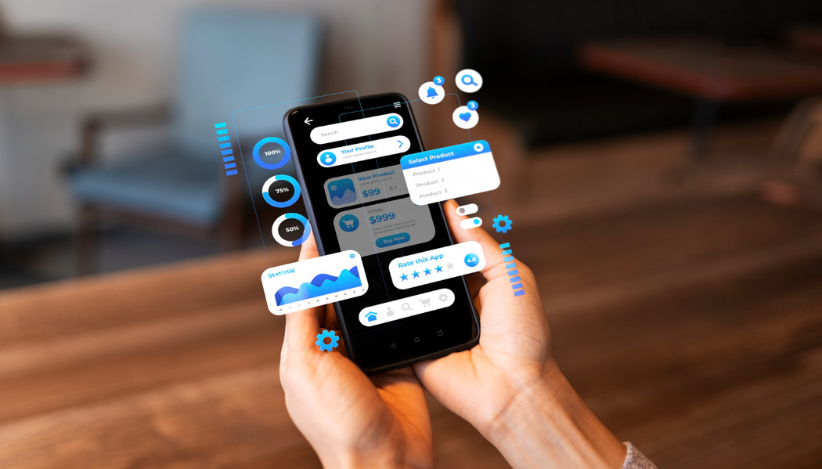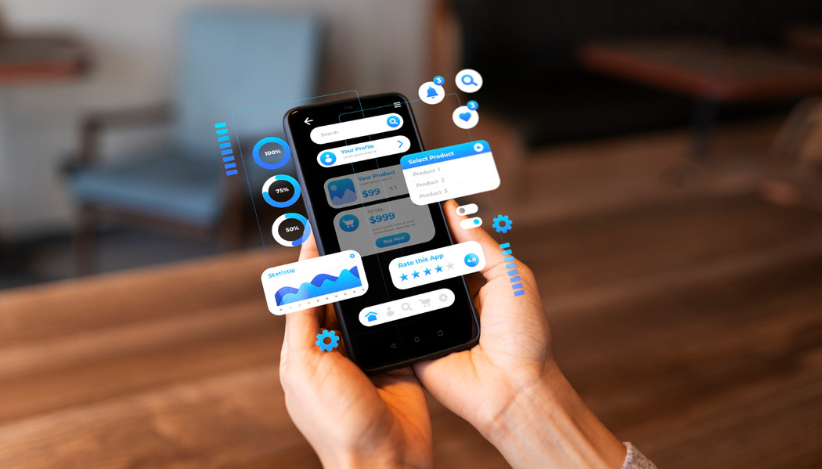
Beyond the Horizon: A Deep Dive into the AI-Driven Evolution of Android Phones
The world of Android phones is in a constant state of flux. For over a decade, we’ve witnessed a steady, iterative march of progress—faster processors, sharper displays, and more capable cameras. Each new version of Android has brought welcome refinements, but the core user experience has remained fundamentally unchanged. We still navigate a grid of icons, manage notifications, and manually switch between siloed applications. However, the industry is on the brink of a seismic shift, a transition from incremental updates to a revolutionary leap. This next frontier is powered by advanced, on-device Artificial Intelligence, promising to transform our smartphones from passive tools into proactive, intelligent companions. This article explores the architecture, user experience, and far-reaching implications of this impending AI-driven evolution, offering a comprehensive look at the future of Android.
The Architectural Leap: Reimagining Android’s Core for an AI-First World
To understand the magnitude of the coming change, we must look beyond surface-level features. The future of Android isn’t just about adding a new AI chatbot to the home screen; it’s about fundamentally re-architecting the operating system from the ground up to be predictive, contextual, and deeply personalized. This involves a move away from a system that simply responds to user taps to one that anticipates user intent.
From Reactive to Proactive: The Intent-Based Operating System
At the heart of this transformation is the concept of an “intent-based” OS. Instead of the user needing to find the right app to accomplish a task, they simply express their intent, and the OS coordinates the necessary resources. This requires a profound change in the Android framework. Future versions will likely integrate powerful, on-device Large Language Models (LLMs) and other neural networks at the system level, not just as standalone applications. These models will act as a central cognitive layer, understanding natural language, user habits, and contextual data (time, location, calendar events) to orchestrate actions across the entire device.
Consider this scenario: You say, “Get me ready for my 9 AM client meeting.” In today’s Android, you might manually open your calendar, find the address, open a maps app for directions, check a transit app for delays, and open a file manager to find your presentation. In an intent-based OS, the system’s core AI would parse this single command, automatically perform all those steps in the background, and present a single, consolidated summary: “Your meeting with Client X is in 45 minutes. Traffic is light, so you should leave in 10 minutes. Here is the presentation, and I’ve pre-loaded directions.” This is the core promise—reducing cognitive load by making the OS do the heavy lifting.
Next-Generation Resource Management
This AI integration extends deep into system resource management. Current Android versions use basic heuristics for managing memory and battery. A future, AI-powered system would take this to an entirely new level. By learning your individual app usage patterns throughout the day, the OS could predictively allocate resources with uncanny accuracy.
- Predictive App Pre-loading: If you open your news, social media, and email apps every morning between 7:00 and 7:15 AM, the OS will learn to pre-load them into RAM at 6:59 AM, making them launch instantly.
- Intelligent Power Allocation: The AI would understand the difference between a high-priority video call and a background data sync. It could dynamically throttle CPU/GPU performance for non-critical tasks while ensuring a flawless experience for what you’re actively doing, extending battery life far beyond current capabilities. For example, it could learn that you rarely use certain power-hungry features in specific locations (like your office) and automatically place them in a deep sleep state.
This architectural shift is the foundational layer upon which a truly revolutionary user experience can be built. It’s less about adding features and more about embedding intelligence into every facet of the operating system, making our Android gadgets feel less like computers and more like extensions of our own minds.
Deconstructing the AI-Driven User Experience

With a new AI-native architecture in place, the way we interact with our Android phones will be completely redefined. The static grid of icons and the rigid separation between apps will give way to a fluid, dynamic, and deeply personal interface that adapts to our needs in real time.
The “Liquid” Interface: A UI That Molds to You
The concept of a “liquid” or “morphing” interface is central to this new UX paradigm. The home screen, lock screen, and even the system settings would no longer be static layouts. Instead, they would become dynamic canvases that reconfigure themselves based on context.
Case Study: The Commuter’s Dynamic Home Screen
Imagine a user, Alex, who commutes to work via train.
- 7:30 AM (At Home): Alex’s phone displays a “Morning” layout. Widgets for weather, news headlines, and a to-do list are prominent. The app dock shows email, calendar, and a messaging app.
- 8:15 AM (Walking to the Station): GPS detects movement towards the train station. The interface shifts to a “Commute” mode. The primary widget now shows the train schedule in real-time. The app dock swaps in a podcast app, a music app, and the transit pass from the digital wallet. A persistent notification shows the platform number.
- 9:00 AM (At the Office): Geofencing recognizes Alex has arrived at work. The phone enters “Work” mode. The wallpaper might change to something more professional, and the home screen is now dominated by widgets for Slack, Asana, and upcoming meetings. Game and social media app icons might be hidden or grouped into a less prominent folder.
Unifying the App Ecosystem with an AI Middleware
One of the biggest friction points in modern smartphones is the siloed nature of applications. An AI-driven OS can act as a powerful middleware layer, breaking down these walls and allowing for seamless cross-app functionality.
This goes beyond the current “Share” intent. The system’s central AI would have access to the capabilities of different apps via new, intent-focused APIs. This allows for complex, multi-app workflows to be executed from a single command. For instance, a user could highlight text in a web article about a historical figure and simply ask, “Create a presentation about this.” The OS would then:
- Use a summarization model to extract key points.
- Invoke a search app’s API to find relevant images.
- Call upon a presentation app’s API to create a new slide deck.
- Populate the slides with the summarized text and downloaded images, applying a basic template.
Implications for Developers and the Hardware Ecosystem
This paradigm shift will send ripples across the entire Android ecosystem, forcing hardware manufacturers and software developers to adapt to a new set of rules. The focus will move from raw CPU performance to neural processing power and from building static apps to creating intelligent, modular services.
A New Developer Paradigm: From Apps to “Intents”

For developers, the rise of an intent-based OS is a double-edged sword. While it opens up incredible possibilities for app integration, it also requires a fundamental rethinking of app design. The monolithic app with a rigid UI will become less relevant. Instead, developers will need to build their applications as a collection of modular services or “capabilities” that can be exposed to the system’s central AI.
- Best Practice: Developers should focus on creating robust APIs that declare what their app *can do* (e.g., “book a flight,” “identify a plant,” “translate text”). The OS will then handle the “how” and “when” of presenting that capability to the user.
- Common Pitfall: Apps that remain as closed-off, siloed experiences will feel dated and clunky in this new ecosystem. Users will favor services that integrate seamlessly into the OS’s predictive workflows. This shift could be as significant as the transition from desktop websites to mobile-first apps.
The NPU Arms Race and the Future of Android Gadgets
This level of on-device AI is computationally expensive. It requires specialized hardware, specifically Neural Processing Units (NPUs), to run efficiently without draining the battery. This will ignite a new hardware arms race among chipset manufacturers like Qualcomm, MediaTek, and Google itself. The key performance metric for a flagship phone will no longer be just its Geekbench score for the CPU, but the TOPS (Trillions of Operations Per Second) its NPU can deliver.
Comparative Data Point: Current high-end NPUs in Android phones deliver performance in the range of 20-40 TOPS. To run the sophisticated, multi-modal AI models required for a truly proactive OS, future chipsets will need to push well into the 100-200 TOPS range, a significant engineering challenge that will define the next generation of Android gadgets.
Security and Privacy in a Predictive World
An OS that knows what you’re going to do before you do it presents unprecedented privacy challenges. For this future to be viable, trust is paramount. The focus must be on-device processing, keeping sensitive data and user behavior models securely on the handset rather than in the cloud. Technologies like Federated Learning will be crucial, allowing models to be trained and improved without raw user data ever leaving the device. Users will also need more granular and transparent privacy controls, perhaps an “AI Privacy Dashboard” that clearly explains what the OS has learned and allows users to edit or delete inferences.

Recommendations and The Road Ahead
The transition to an AI-driven Android experience will be gradual, but its arrival is inevitable. Both users and industry players should prepare for this exciting but complex future.
Pros and Cons of the AI-First Approach
- Pros: A vastly more efficient, personalized, and intuitive user experience. Reduced friction in daily tasks and a more natural, conversational way of interacting with technology.
- Cons: Significant privacy and security risks if not implemented carefully. The potential for a new kind of digital divide between those with high-end, NPU-equipped devices and those with older hardware. A steeper learning curve for developers and the risk of a more fragmented ecosystem as different manufacturers implement their own AI layers.
Tips and Considerations for Users
- Focus on AI Hardware: When purchasing new Android phones in the coming years, pay close attention to the AI and NPU specifications. A powerful NPU will be the most critical component for future-proofing your device.
- Embrace Current AI Features: Get familiar with the predictive features already available, such as Google Assistant Routines, Smart Reply, and the Discover feed. Understanding how these work will ease the transition to a more deeply integrated AI system.
- Be Vigilant About Permissions: As apps and the OS itself become more interconnected, be more diligent than ever about reviewing app permissions. Understand what data you are sharing and why.
Conclusion: The Dawn of the Intelligent Companion
The evolution of Android is poised to take its most significant leap yet. Moving beyond simple iterative updates, the next generation of the world’s most popular mobile operating system will be defined by pervasive, on-device artificial intelligence. This shift promises to dissolve the barriers between apps, anticipate our needs, and create a “liquid” interface that adapts to the context of our lives. While this AI-driven future presents formidable challenges in hardware requirements, developer adaptation, and user privacy, the potential reward is immense: transforming our Android phones from a collection of apps into a truly intelligent, proactive companion. The latest Android news may focus on small tweaks, but the real story is the foundational work being laid for a smarter, more seamless tomorrow.



